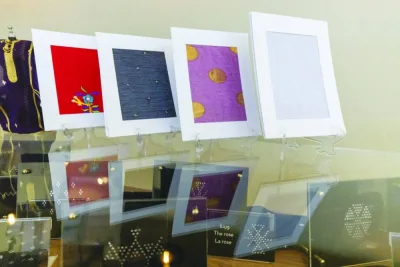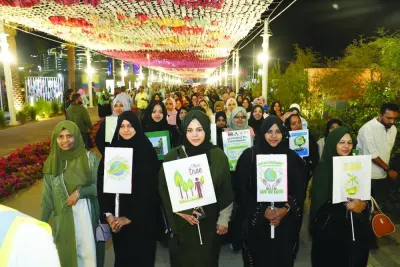Qatar National Library (QNL), held a special event this week bringing organisations together to counter the trafficking of cultural artifacts in the region. The two-day webinar, titled ‘What is Antiquities Trafficking?’ held recently discussed the structures of supply chains for the illicit trade of cultural items, identified key stakeholders involved in the criminal practice, and explored the sources, transit routes and market countries of the illegal activity.
The webinar was part of the Himaya Project Lecture Series, an initiative QNL launched to counter the trafficking and illegal circulation of documentary heritage in the Mena region and neighbouring countries. Himaya engages international agencies and regional organisations to protect heritage artifacts and thwart the trafficking of such items.
The discussions were led by Veronica Costarelli, project manager, Cross-Border Syrian Emergency Response with the UN’s International Organisation for Migration and a post-crisis antiquity trafficking researcher and Dr Samuel Andrew Hardy, post-doctoral research fellow in cultural heritage and conflicts, Norwegian Institute in Rome, University of Oslo.
The speakers analysed case studies from Iraq and Syria to illustrate the different aspects and key features of antiquities trafficking and its transnational nature.HE the Minister of State and QNL President Dr Hamad bin Abdulaziz al-Kawari, said: “For centuries, the Arab and Middle East region has been a melting pot of civilisations that produced many artifacts with historical, spiritual and aesthetic values, not to mention the pride and respect of their owners and custodians.”
“The trafficking and smuggling of antiquities is certainly not a new phenomenon, and activity has been rising in recent years. In the Mena and West and Central Africa regions, trafficking of such items is greater due to conflict and insecurity—notably in countries such as Chad, Iraq, Libya, Mali, Niger, Syria, Sudan and Yemen. It may often be linked to the activities of criminal and terrorist groups, who use it as a means to increase their income and launder money,” he explained.
“Trafficking of such items is a robbery of the rights of peoples, a falsification of the history of nations, and a removal of their heritage and identity. While criminals make significant profits from this illicit trafficking, humankind is denied access to archaeological information and artifacts of its shared heritage,” continued Dr al-Kawari.
Costarelli said: “This heritage of the Arab region and the number of impoverished and conflict-affected nations has led to increased trafficking and smuggling of antiquities and artifacts in the region, threatening its cultural heritage. Professionals must act to spread awareness about antiquities trafficking and help law enforcement to counter this illegal activity.”
“The international organisations in charge of countering the trafficking of artifacts have tended to focus on the illegal circulation of archaeological and artistic items. However, more also needs to be done with respect to documentary heritage, which is even more at risk because it is less protected by national legislation and is easier to move illegally,” Dr Hardy added.

HE Dr Hamad bin Abdulaziz al-Kawari along with other panellists.


